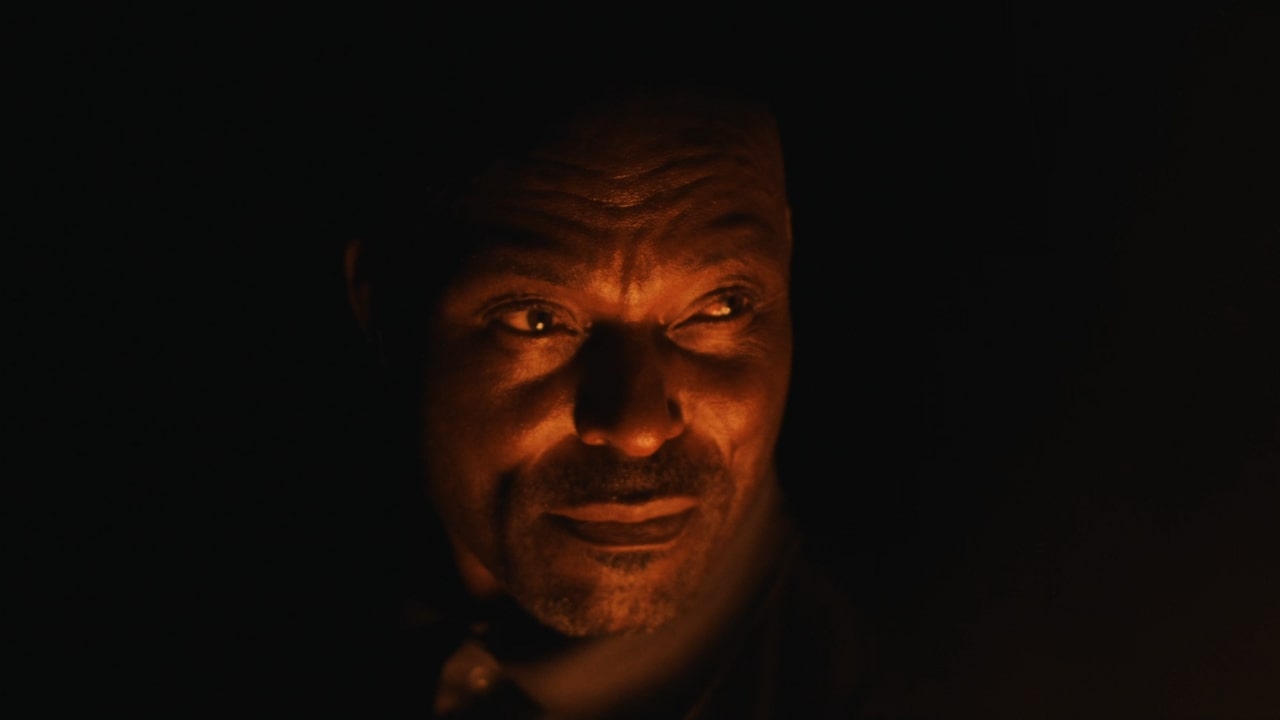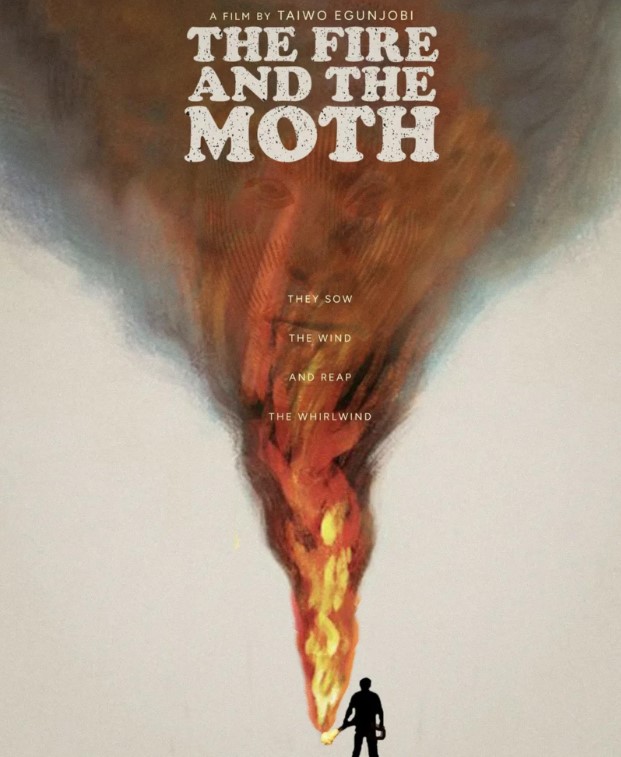The Fire and the Moth may not end with a bang, but it lingers—in its quiet devastation, in the questions it leaves unanswered, and in the moral murk it forces us to sit with.
By Joseph Jonathan
Taiwo Egunjobi is one filmmaker whose career I’ve had the pleasure of watching unfold with genuine excitement. From his directorial debut, In Ibadan (2020), to All Na Vibes (2021), which opened the 2021 NollywoodWeek Film Festival, and his third feature A Green Fever (2023), he has consistently shown promise and growth.
Now, with his fourth feature, The Fire and the Moth, which had its world premiere at the 2025 NollywoodWeek Film Festival, Egunjobi demonstrates a maturing vision and a willingness to take creative risks that signal an exciting new chapter in his filmmaking journey.
Written by Isaac Ayodeji (Egunjobi’s long-time collaborator), the film follows the chaos and violence that ensue in a small western Nigerian town after the theft of a rare Ife bronze head by Saba (Tayo Faniran), a hired smuggler.
One of the central themes in The Fire and the Moth is the far-reaching nature of consequences. Saba’s theft of the Ife bronze head, an act that at first seems transactional, sets off a chain reaction of violence and betrayal that implicates nearly everyone in its path. The film suggests that no action exists in a vacuum; every decision, especially one rooted in greed or desperation, has the potential to spiral beyond the control of its originator.
Beyond consequence, the film also explores themes of greed, survival, family, and loss. Each character’s interaction with the artifact is shaped by their personal desires and circumstances. Unsurprisingly, these ambitions are undercut by the harsh reality that not everyone will make it out alive or whole.

Family bonds are strained, alliances shift, and moral lines are blurred. In portraying these dynamics, the film delivers a subtle but sharp commentary on the human cost of chasing power and wealth, especially in systems where justice is a luxury and survival often requires compromise.
The film’s central motif — the Ife bronze head — is its most compelling narrative device. Far from being just a stolen artifact, it morphs into a symbol of doom, desire, and disillusionment, taking on a different meaning for each person it encounters. For Saba, it’s a lifeline for his ailing father; for corrupt policeman, Opa Stephens (Olarotimi Fakunle), a ticket to generational wealth; for Abike, it’s the promise of a better future for she and her sister; for the idealistic Teriba Bello (William Benson), a symbol of cultural plunder and moral decadence. The bronze headʼs curse-like trajectory, changing hands from thief to opportunist to victim, eerily mirrors the cyclical greed of The Treasure of the Sierra Madre (1948).
The cinematography in The Fire and the Moth, helmed by Fadamana Okwong, is one of the film’s most impressive elements, serving both aesthetic and narrative functions. Okwong employs wide frames and aerial shots that ground the characters within their environment, allowing the town to emerge as a living, breathing presence rather than a static backdrop.
This visual approach reinforces the story’s tension as the stillness of the town contrasts sharply with the chaos brewing beneath its surface. The framing choices also give weight to silence and space, allowing the audience to absorb the gravity of the unfolding events. It’s a style that doesn’t call attention to itself but works quietly and effectively to immerse viewers in the world of the film.

Performance-wise, Faniran delivers a mostly solid lead as Saba, embodying a man burdened by exhaustion and bad decisions. His slumped shoulders and hollow stare show a lifetime of compromises, yet Faniran avoids reducing the character to mere nihilism. Opposite him, Ini Dima-Okojie as Abike brings a necessary spark: her dynamic with Saba shifts from wary distrust to an uneasy alliance, and she handles the transition with poise and nuance.
William Benson’s Teriba Bello, a lone justice-seeker in a corrupt system, adds moral tension, while Olarotimi Fakunle’s portrayal of the twitchy, corrupt officer Opa Stephens feels all too familiar but is an effective take on institutional rot.
On the flip side, tension simmers throughout The Fire and the Moth, but the payoff isn’t always satisfying, as the film’s pacing occasionally works against its immersive storytelling. While the narrative builds intrigue and sustains momentum for much of its runtime, the final chase sequence lacks the urgency and intensity its buildup promises.
In addition, although the film is anchored by the compelling theme that actions have far-reaching consequences, not all character arcs feel fully earned, with some motivations coming across as thin or insufficiently developed to justify the story’s progression.
Despite its occasional storytelling missteps, The Fire and the Moth is a testament to Taiwo Egunjobi’s evolution as a filmmaker. Egunjobi demonstrates a growing confidence in both form and ambition, weaving together a morally complex narrative with rich performances and strong visual language.

The film marks a notable shift toward bigger stakes and bolder ideas, signaling that Egunjobi is no longer just refining his voice but actively expanding its range. If this project is any indication, audiences can expect even more daring, layered, and resonant storytelling from him in the years to come.
The Fire and the Moth may not end with a bang, but it lingers—in its quiet devastation, in the questions it leaves unanswered, and in the moral murk it forces us to sit with. It’s a film that suggests that sometimes, the greatest damage isn’t done by the crime itself, but by the silence, fear, and complicity that allow it to fester. And in that way, it burns slowly, like a moth inching fatally closer to the flame.
Rating: 2.9/5
Joseph Jonathan is a historian who seeks to understand how film shapes our cultural identity as a people. He believes that history is more about the future than the past. When he’s not writing about film, you can catch him listening to music or discussing politics. He tweets @JosieJp3.




